SUMMARY
This is AI generated summarization, which may have errors. For context, always refer to the full article.
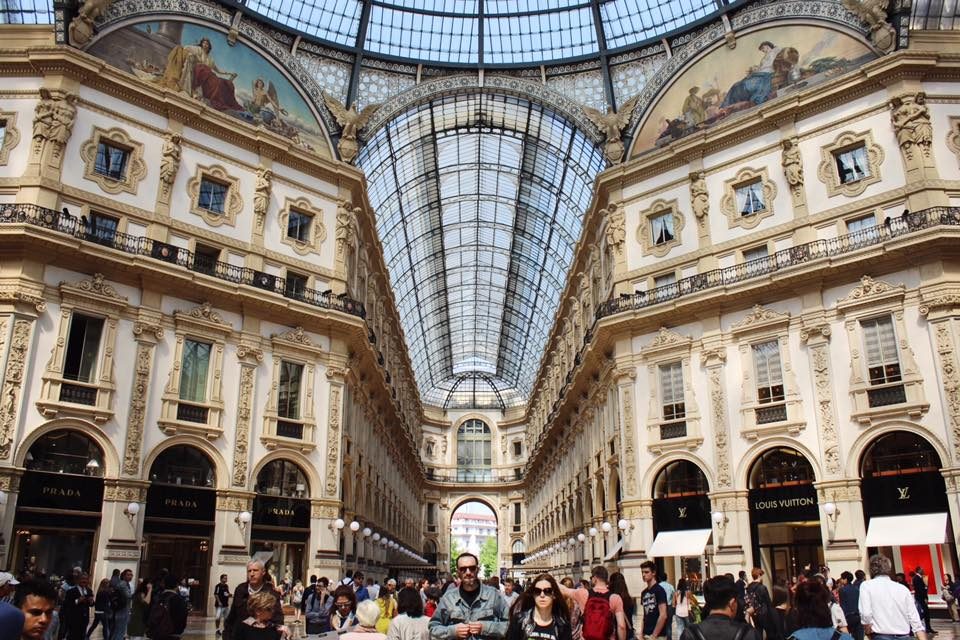
We’ve all seen it in movies and postcards – romantic Italy with its great wine, delicious food, breathtaking architecture, rich history, among others. There just seems to be nothing Italians do without great care and sophistication.
It’s just how things are in Italy, where people take great pride in their culture and their every craft.
Growing up thousands of miles away, I’ve dreamt of seeing it for myself. But then, as for a lot of other Filipinos, a trip all the way to Europe all seemed like a shot to the moon.
I proved myself wrong this summer, however, when after months of preparations, I finally managed to visit my dream Italian cities, all for a meager budget of P60,000.
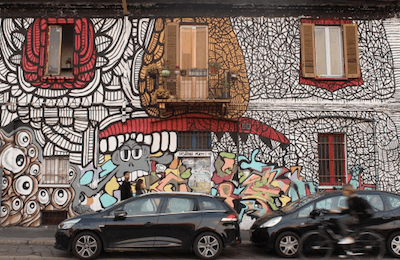
Let me share to you a one-week itinerary (flight time excluded) for 4 which I’ve tried and tested with my family.
In this itinerary, you will be visiting at least 4 cities in northern Italy – Milan, Como, Verona, and Venice – with Milan as your entry and exit point. Feel free to alter it to suit your preference – I’d love to hear about your trip in the comments!
Getting a Schengen visa and plane tickets
Assuming that you already have a passport, the first thing you’ll need to get is a Schengen visa. For starters, you may check out this Rappler guide in getting a Schengen visa.
Just as in the guide, I got my visa through the VIA Center in Makati. It took around two weeks for me to get my visa approved.
What you will need is a short-term visit permit which will require you to submit plenty of documents including an employment certificate, bank statement, and travel health insurance.
Remember that you need to be able to give an impression that you have no reason to stay in Italy beyond 90 days, which means that you need to prove that you have the financial capability to stay in Italy and come back to the Philippines. I had to save up for months just to make sure I had plenty of money in my bank account.
In securing a visa, I’ve spent at least P6,000 (travel health insurance included).
One of the requirements for getting a visa are booked round-trip tickets from the Philippines to Italy. If you book early, you can get plane tickets from Manila to Milan and vice versa for as low as P30,000. I got mine through Oman Air at this rate.
Accommodations
For this itinerary, you will be staying only in Milan and traveling to other cities by day. There are plenty of accommodations all over Milan but it’s best if you book early. My suggestion is that you find one which is a walking distance away from an underground train station.
For budget hotels, you can find some for as low as 40 euros (P2,172 per night). But I suggest, especially if you’re travelling in a group of 4, that you use AirBnb instead where you can find a whole apartment for around the same price (just prepare extra money for the cleaning fee).
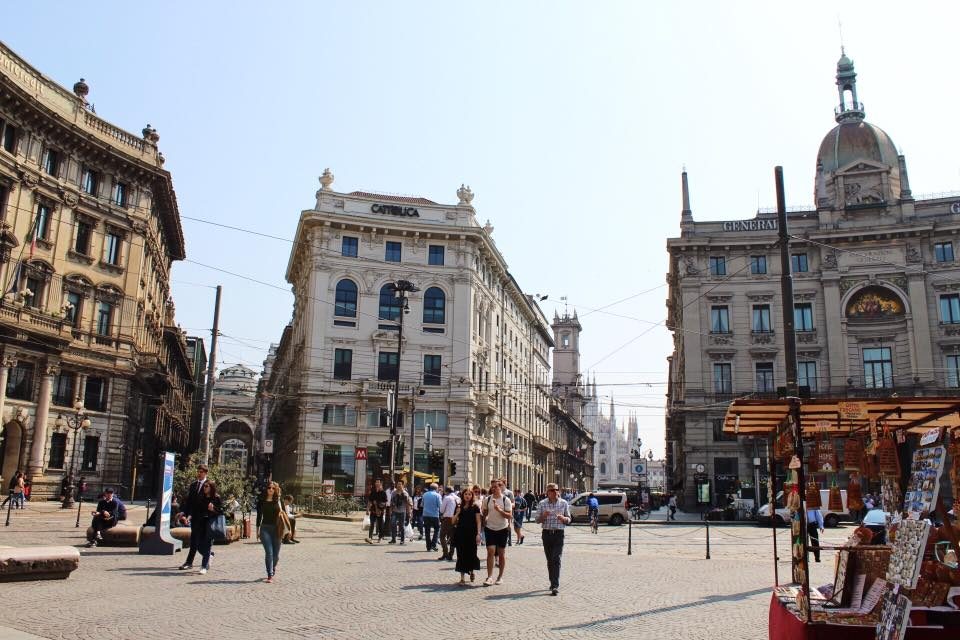
Working on a 40 euros per apartment per night budget, each one of you will only need to shell out at least 80 euros (P4,346) for 8 nights, which already includes the night upon your arrival to Milan and the night before you leave.
For food, you can save by buying breakfast or lunch from grocery stores. If you’re staying in an apartment, they are usually equipped with a kitchen so you can at least heat up food.
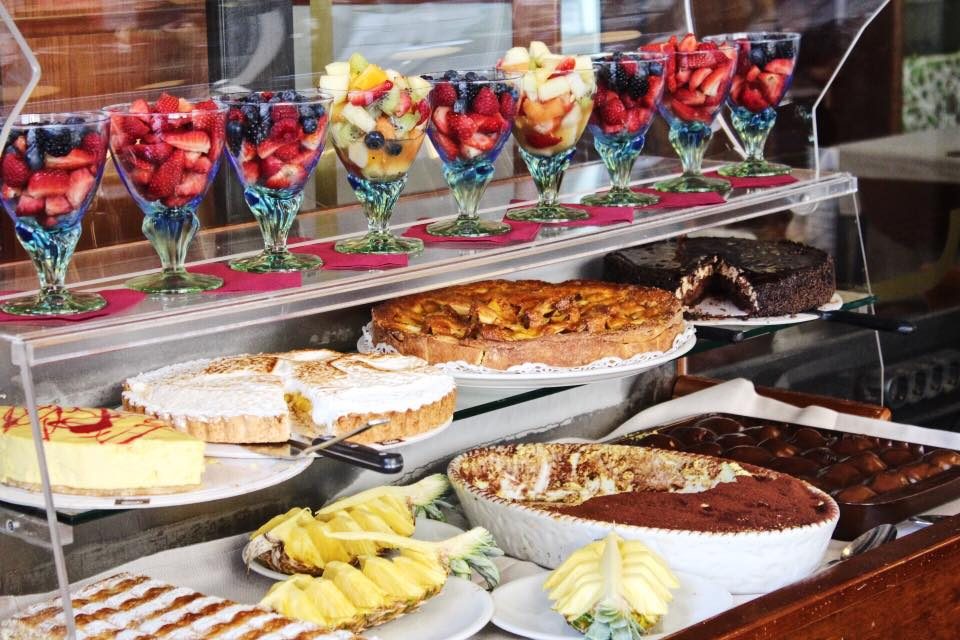
But of course, you simply can’t go on a trip to Italy without trying out good ol’ Italian food. I usually ate lunch on the go, buying from food stalls as I walked around. Food from food stalls is quite heavy – for example, I was able to buy a big cone of Belgian fries, chicken, nuggets, and fish sticks for 8 euros (P434), and gourmet sandwiches for around 4 euros (P217) each.
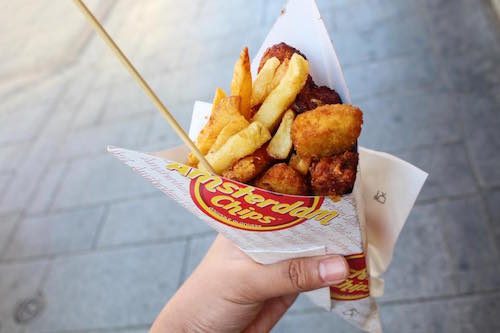
A single pasta dish costs around 8 to 12 euros (P651) and servings are usually big.
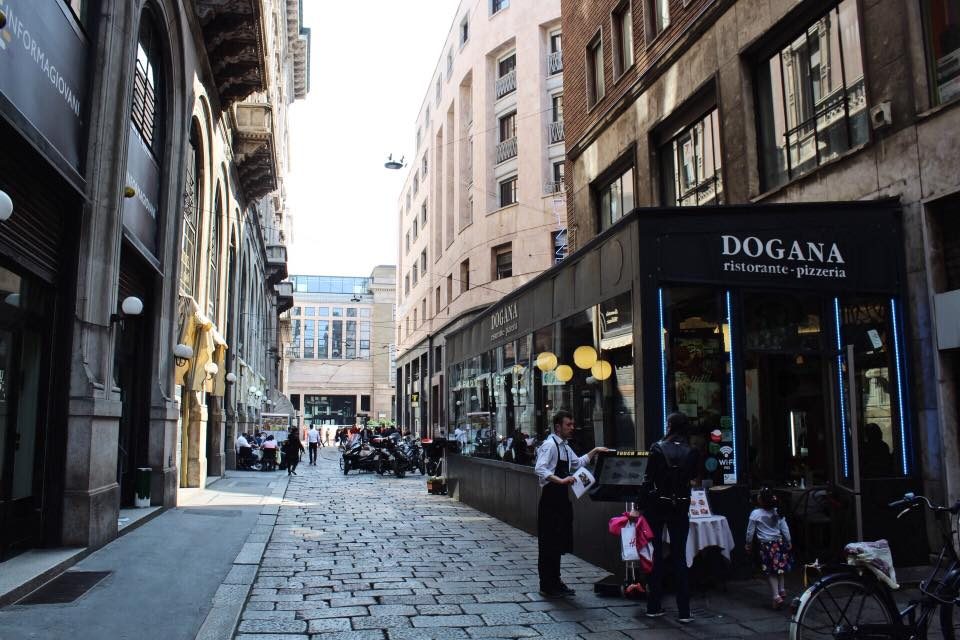
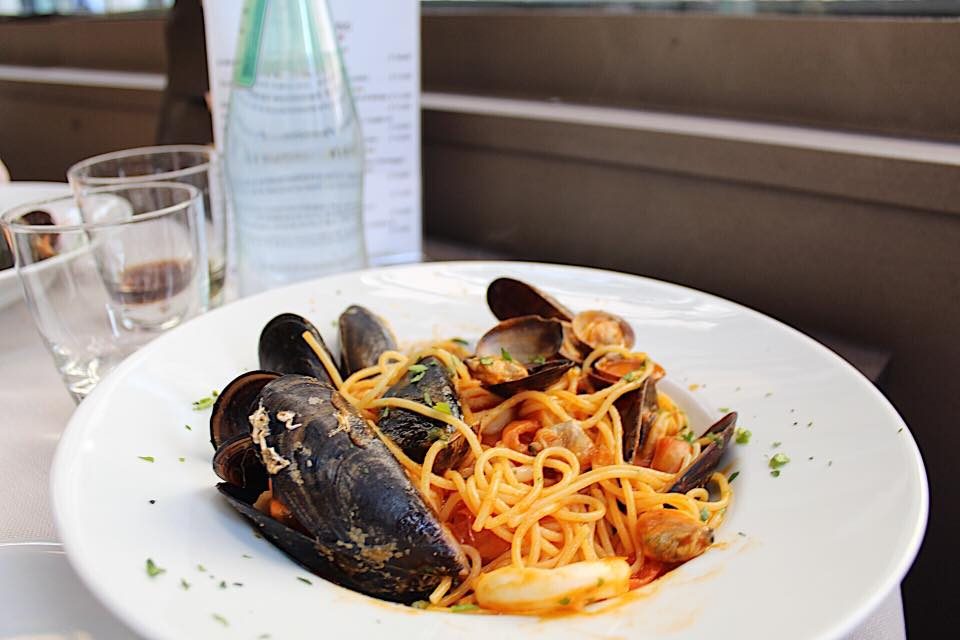
Overall, each one of us spent around 120 euros (P6,517) for food.
Here is an overview of the itinerary:
- Day 0 – Flight to Milan
- Day 1 – Milan (hop-on, hop-off sightseeing bus)
- Day 2 – Como
- Day 3 – Milan (the last supper) and dinner at Naviglio
- Day 4 – Verona
- Day 5 – Milan (shopping in Duomo)
- Day 6 – Venice
- Day 7 – Milan (Rest and last minute shopping)
- Day 8 – Flight back to Manila
Transportation
Now, before we go through your itinerary, you’ll need to understand Milan’s transportation system first.
The good news is that Italy’s transportation system is very convenient and easy to understand (at least compared to ours).
To really save time and money, I suggest that you use the Metro – the underground subway system – as your main mode of transportation within Milan. Familiarize yourself with Milan’s Metro map and make sure to know which stations are closest to your hotel/apartment and target destinations
There are maps and guides available at the airport and train stations and people are generally willing to help you out when you ask them.
For either bus or Metro, a single journey ticket costs 1.50 euros. Each ticket is valid for 90 minutes (which means that you can ride as many trains/buses with one ticket 90 minutes after it was validated). To save, I suggest that you buy a 10-card which costs 13.80 euros (P749) and is good for 10 journeys. One of this is all you’ll need for this itinerary.
Taxis in Europe are very expensive so avoid them as much as possible. If commuting intimidates you, a good alternative is to hire Filipinos’ coaching services in Milan whose rates are so much cheaper. You can arrange trips with them beforehand by contacting them online or you can also find them waiting for customers at the airport.
If you have the extra cash, you may also book them instead for long drives when you go to other Italian cities.
I suggest that before leaving for Milan, contact them and ask for a number just so you’d have people to call in case you get lost.
Milan – Day 0 to 1
The travel from Manila to Milan, including the stop, will take around 16 hours (hoping that it doesn’t get delayed like what happened to mine). If you leave Manila by night like I did, it will also be evening already when you get to the airport in Malpensa.
The airport is still quite far from the city center in Milan so you may take the train, get a cab, or hire a Filipino coach service.
The fastest option is to ride the train, Malpensa Express, which will take you to Piazza Cadorna or to the Central Station. Both are connected to other train lines so make sure to know which Metro station is nearest your hotel. This will cost each of you around 11 euros.
Again, do not take a cab. In my case, since we were already tired from the long trip, we availed of a Filipino coach service which cost 35 euros for a one way trip.
After resting at your hotel/apartment in Milan, you’re now ready to start your tour.
The cheapest and easiest way to tour Milan is through a sightseeing bus (also known as a hop on hop off bus). These buses continuously go around tourist spots all over the city every day, and just as the name implies, you can hop on and off them anytime. The ticket for this bus would cost you around 19 euros per day, and the buses are already equipped with an audio guide.
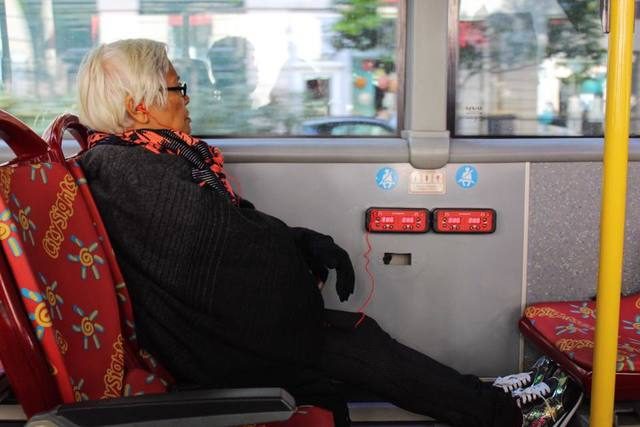
You can buy a ticket at any bus so just ask your host/hotel for the nearest stop .
There are different lines for these buses, all going to different sets of tourist spots in Milan. Line A for example will take you to Cadorna, Cenacolo, Sant Ambrogio, Parco Basiliche, Sforza, Duomo, Manzoni-Scala, and Manin.
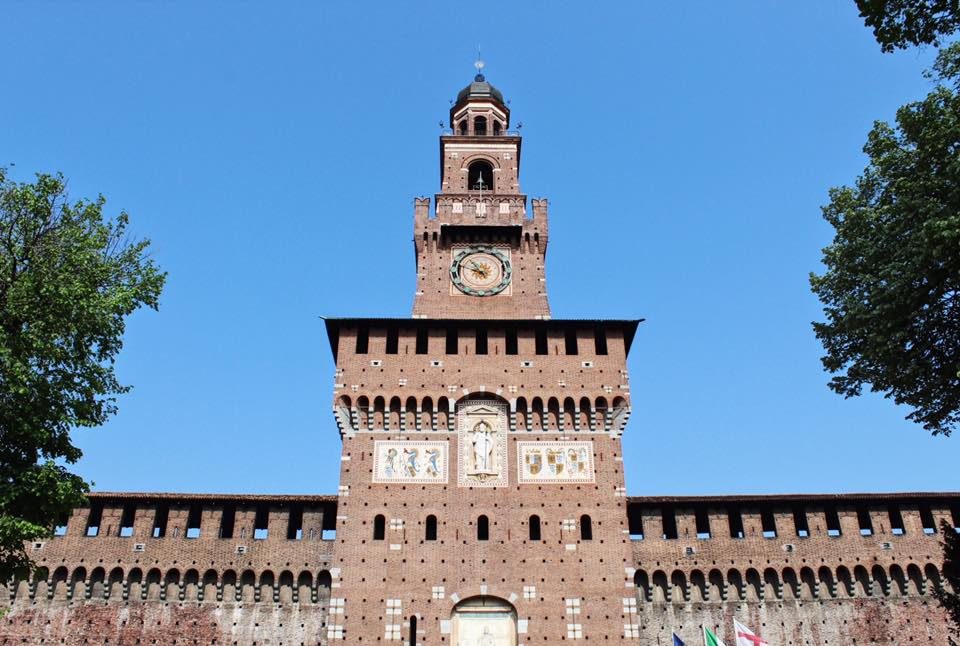
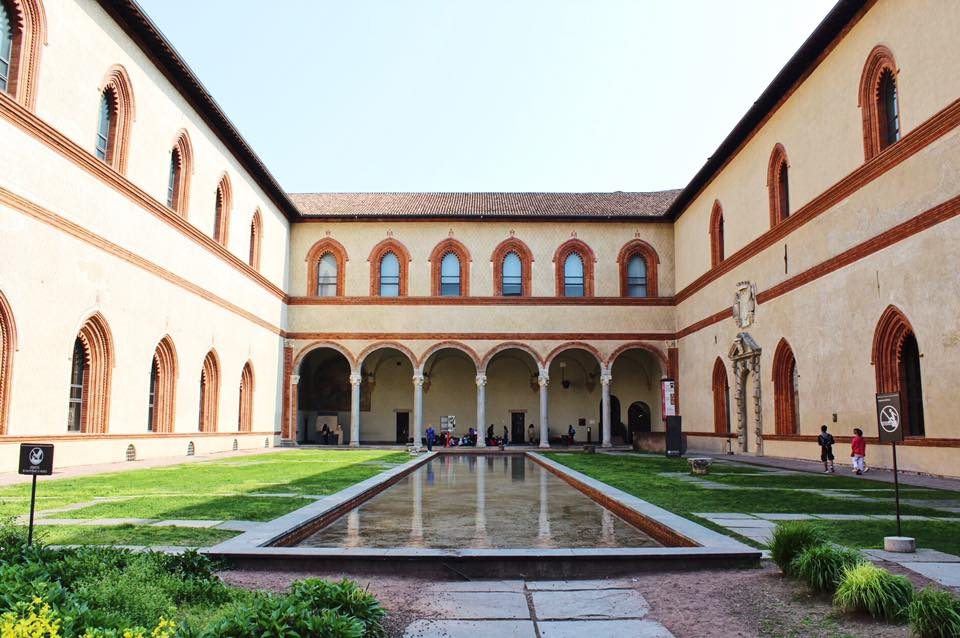
I suggest that you spend some time in the Sforza Castle, a 15th-century castle now housing several museums and art collections.
There are plenty of food you can buy around tourist spots too like Belgian fries, gellatos, and sandwiches. Yum!
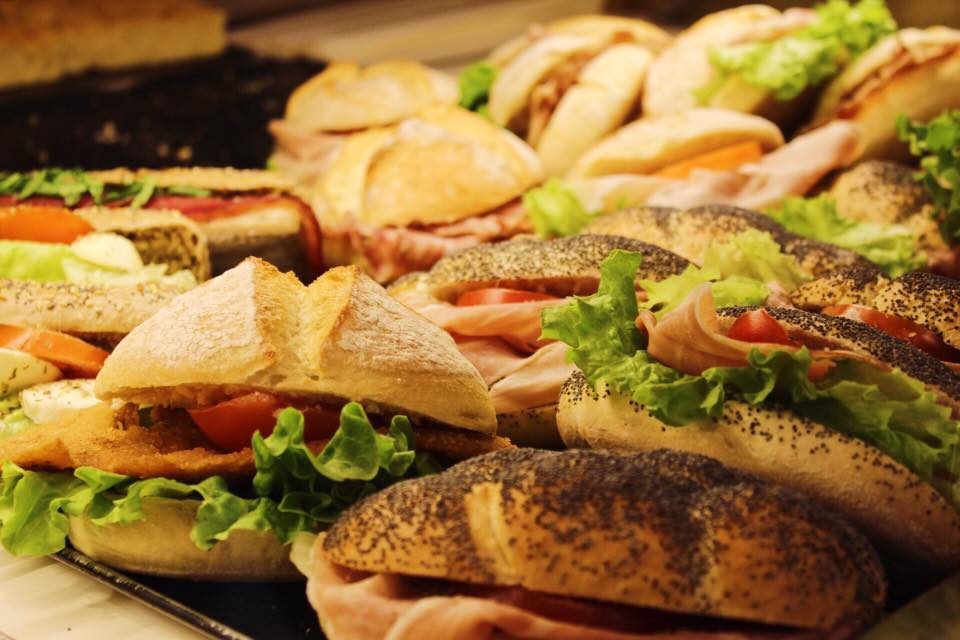
Day 2 – Como
Now it’s time to go to another Italian city!
On your second day, you can take the train from Milan to Como. (The train station is at Cadorna which you’ll discover when you take the sightseeing bus). If you book early, a train ride to Como would cost you only 5 euros each. The ride will take only 30 minutes to an hour.
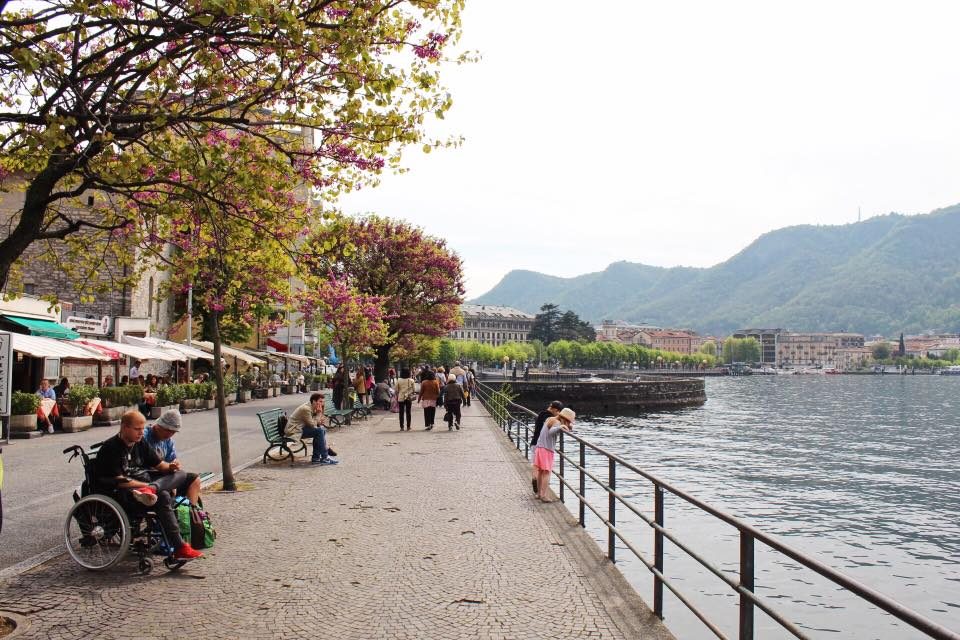
Como is a classic honeymoon destination in Italy – a lakeside city with a view of the Alps.
Just a walk away from the train station, you can ride a cable train to Brunate, a small uphill town. For 5 euros, you get to ride the century old Como-Brunate funicular up and down the mountain.
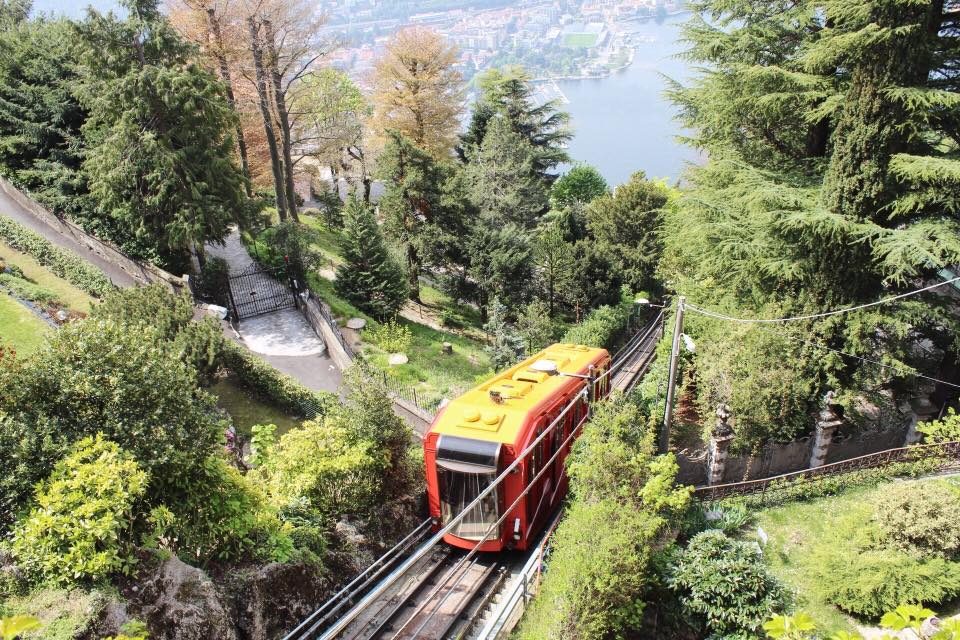
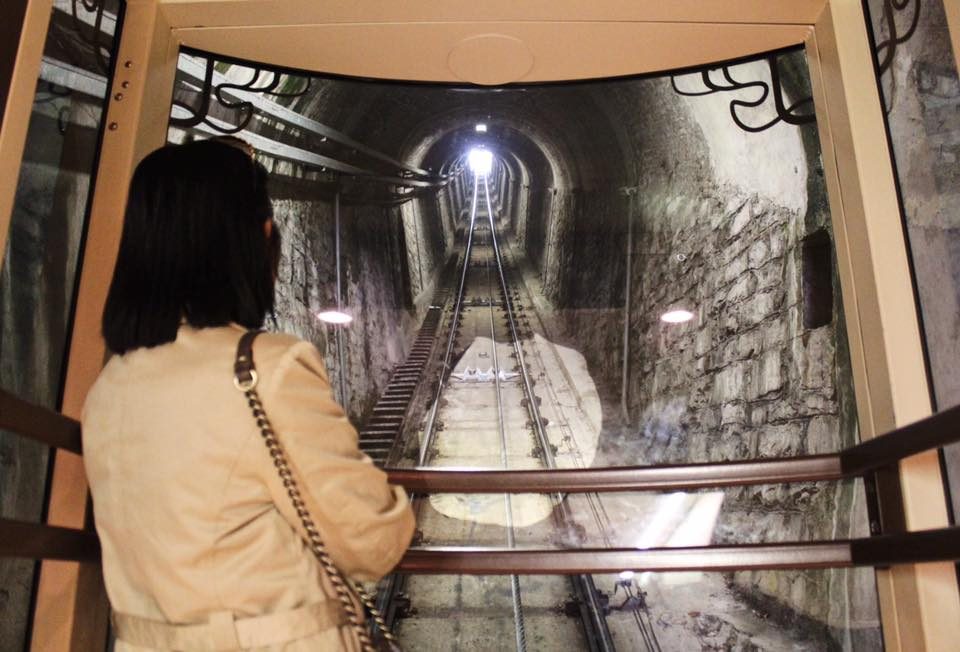
Up above is a spectacular full view of Lake Como. You’ll come across plenty of restaurants beside Lake Como but I suggest that you eat lunch at Brunate so you can also enjoy the view. While there, make sure to try out Lombardy’s famous wine!
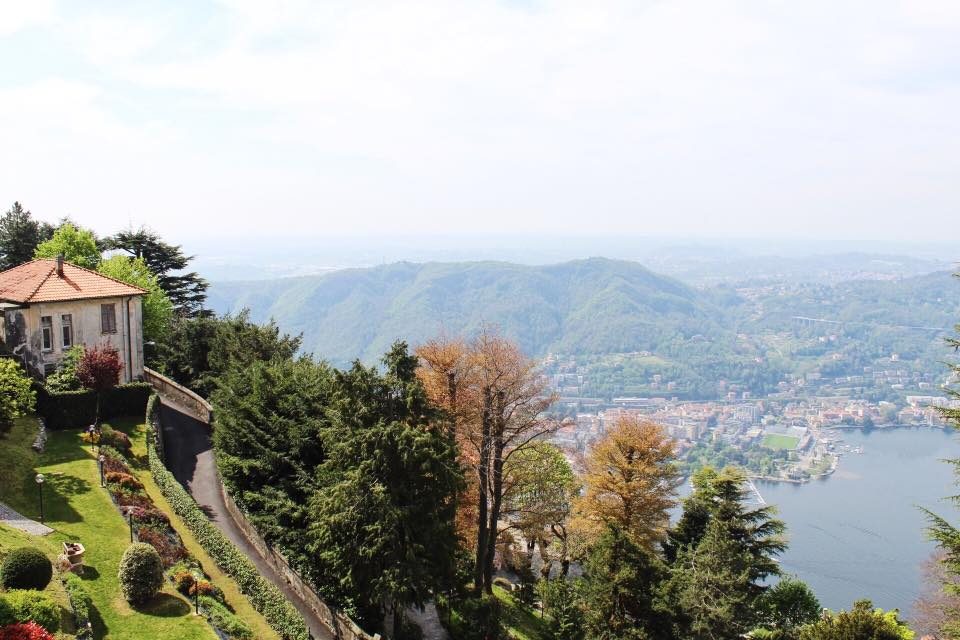
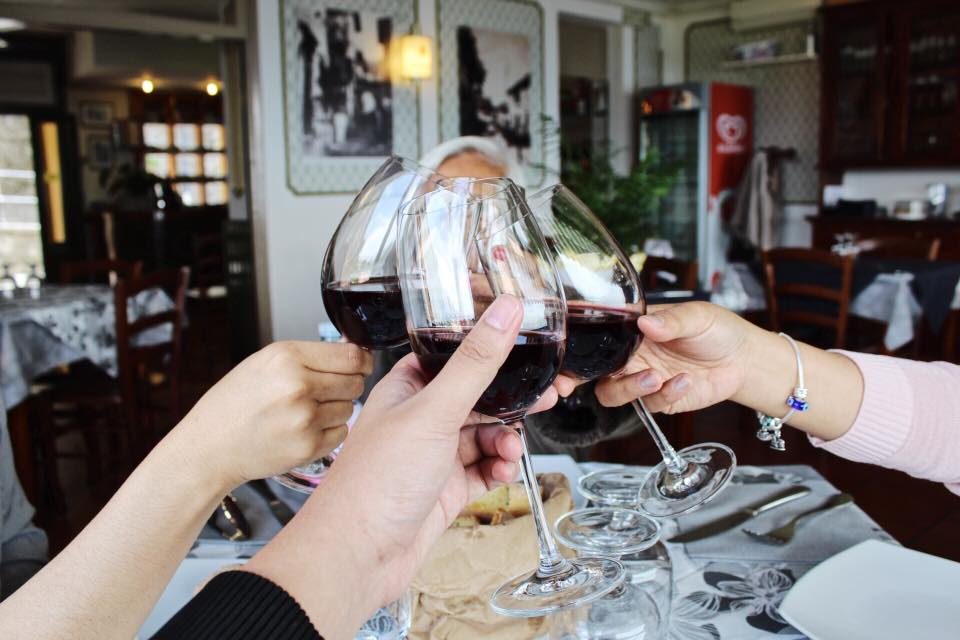
Most of the souvenirs you can find in Como are fine wooden products like wooden yoyos, keychains, and figurines, among others. They can be pretty expensive but there are some small items you can buy while on a budget.
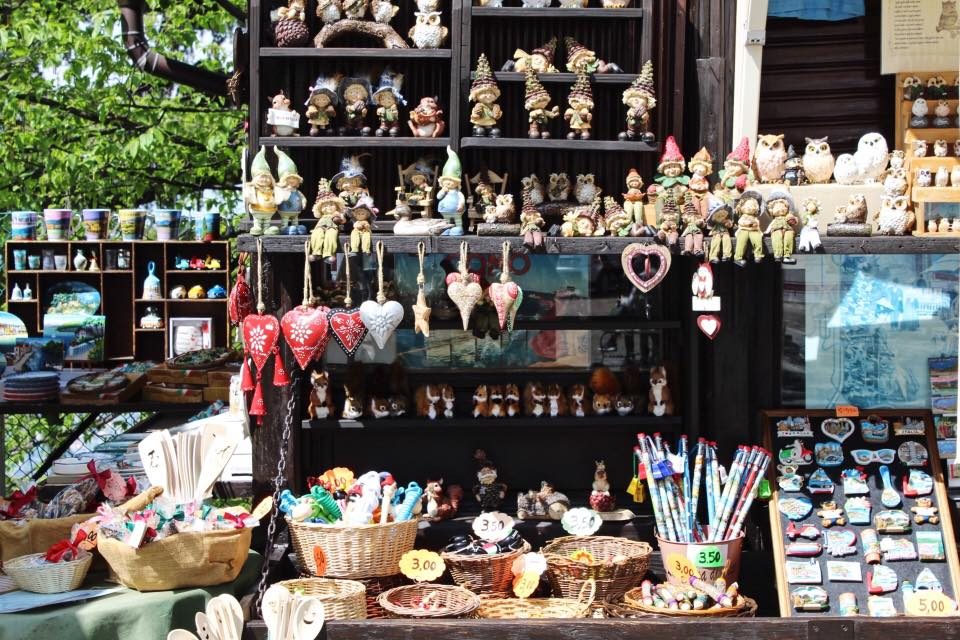
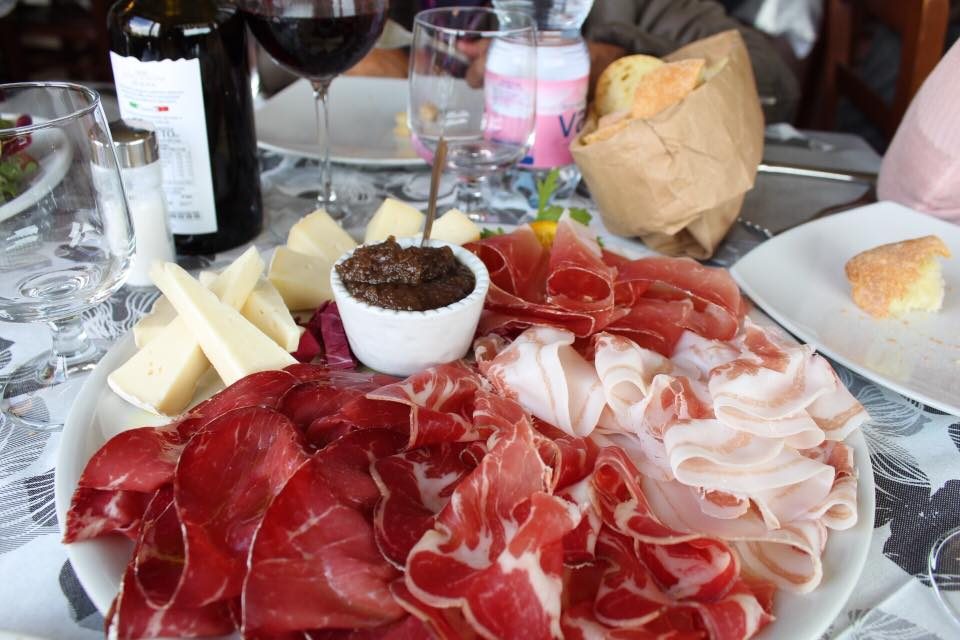
There are lots to see in other parts of Como too. You can walk around the city, or if you have an extra budget, take a boat ride on Lake Como too (take a public ferry, not a private boat). You can find a price list here.
By 7pm, travel back to Milan via train.
Bonus tip: Switzerland is pretty close to Como already so if you have extra time, you can take a train to Bellinzona and check out its three castles or visit the Alprose Chocolate Museum in Caslano to know how Swiss chocolates are made.
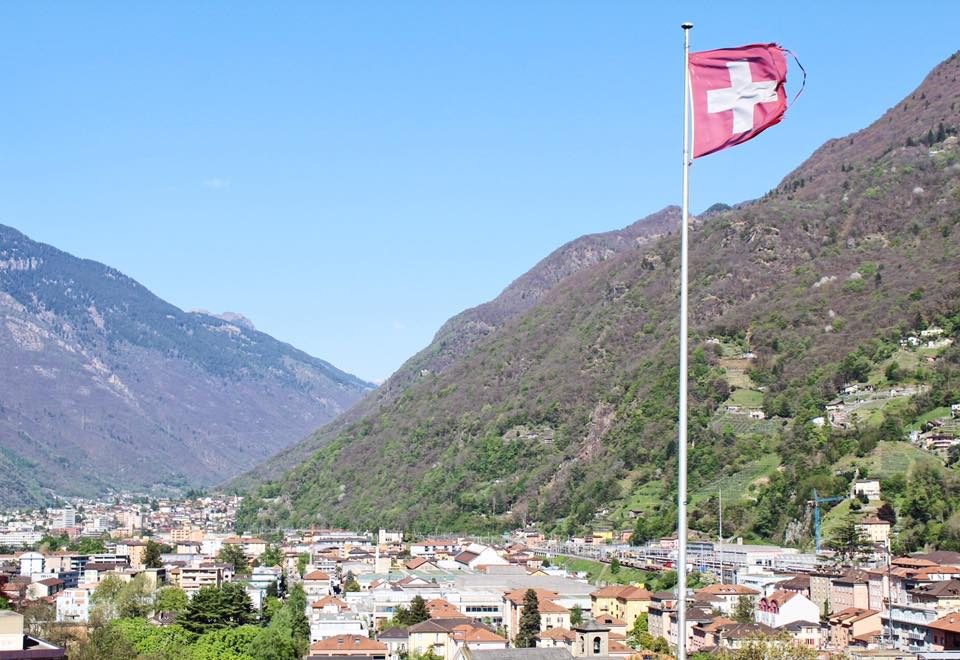
Day 3 – Milan (the last supper) and eating at Naviglio
For your 3rd day, you can visit and see for yourself “The Last Supper,” a late 15th-century mural painting by Leonardo da Vinci in the refectory of the Convent of Santa Maria delle Grazie. If you rode the sightseeing bus on your first day, finding it should be easy.
To avoid lines, book your ticket online for as low as 12 euros.
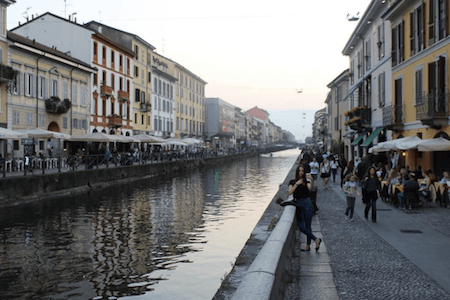
For dinner, I suggest you go to buzzing Naviglio district – Milan’s canal area (canals were made to transport materials used to build the Milan Cathedral) – which is now surrounded by a selection of bars and restaurants.
There are plenty of buffets in the area, too, where you can eat unlimited food for as low as 8 euros!
Day 4 – Verona
On your fourth day, visit the home of Shakespeare’s famous Romeo and Juliet – Verona.
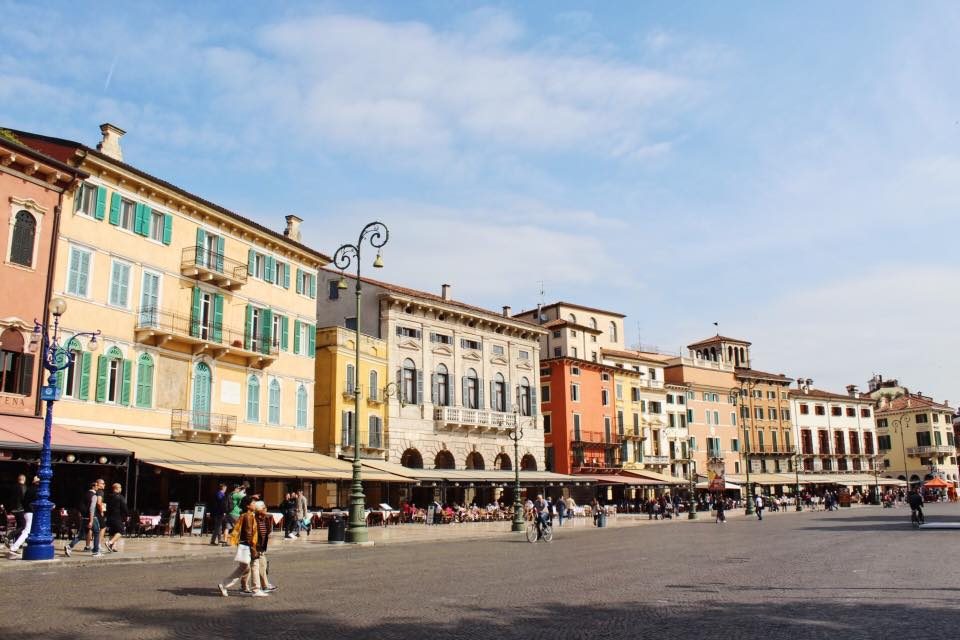
Again, you can take a one-hour train ride to Verona from Milan for as low as 12.75 euros.
I fell in love with Verona’s pastel-colored houses. Just a walk around the city will get you enough Instagram-worthy photos for a day or two.
It’s also a city full of museums, so to fully enjoy your day, I suggest you visit some of them.
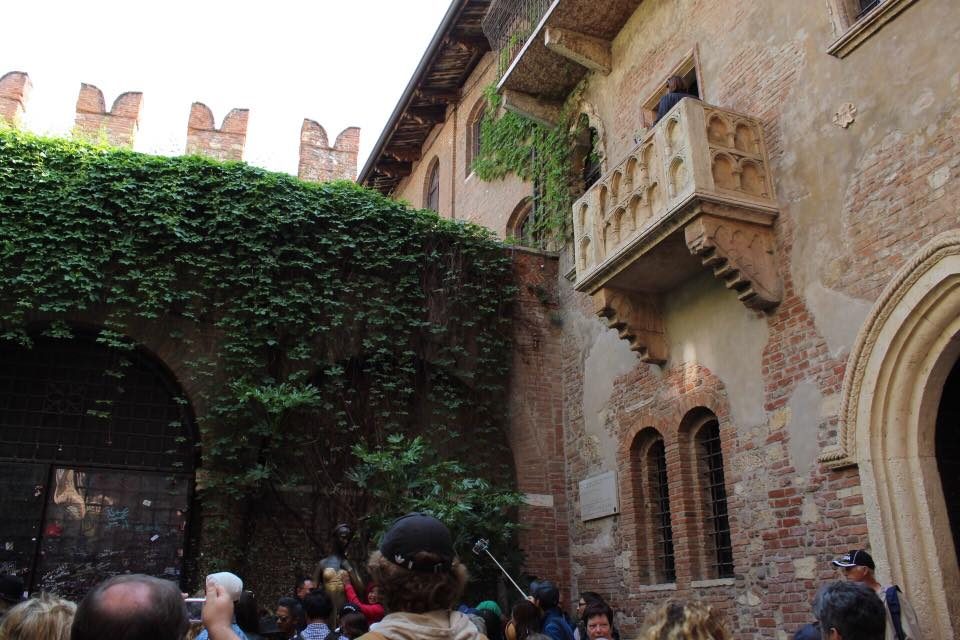
A must-visit is Casa di Giulietta (Juliet’s House) – a 1300s house and museum, with a stone balcony, inspired by Shakespeare’s play.
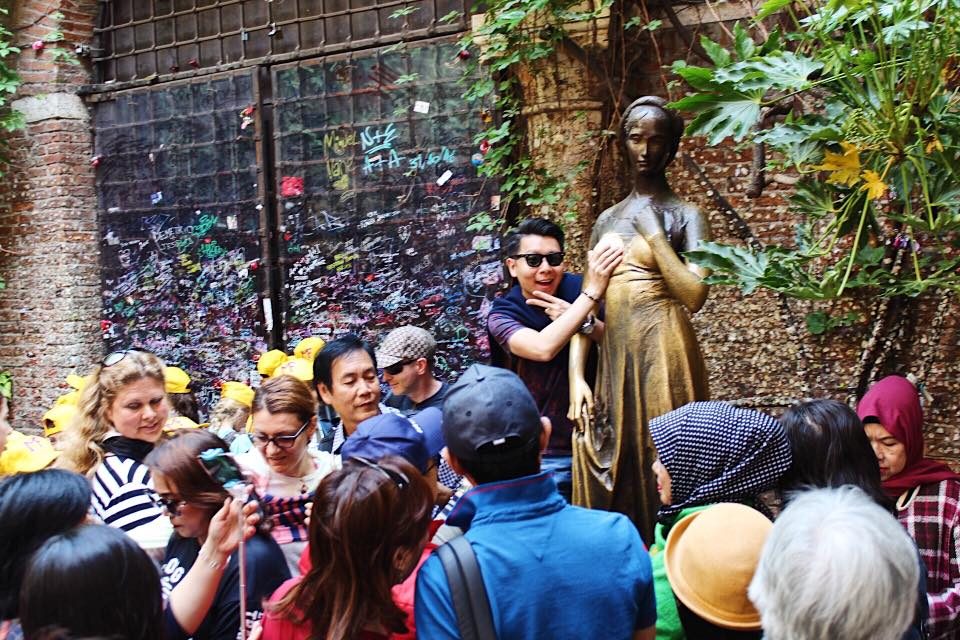
But fair warning: the house’s courtyard is usually packed with people.
Entrance to the courtyard is free. There, you can take a photo with a statue of Juliet (whose breasts people touch because they believe doing so would help them find their soulmates), leave a love locket, or buy Romeo and Juliet-related souvenirs.
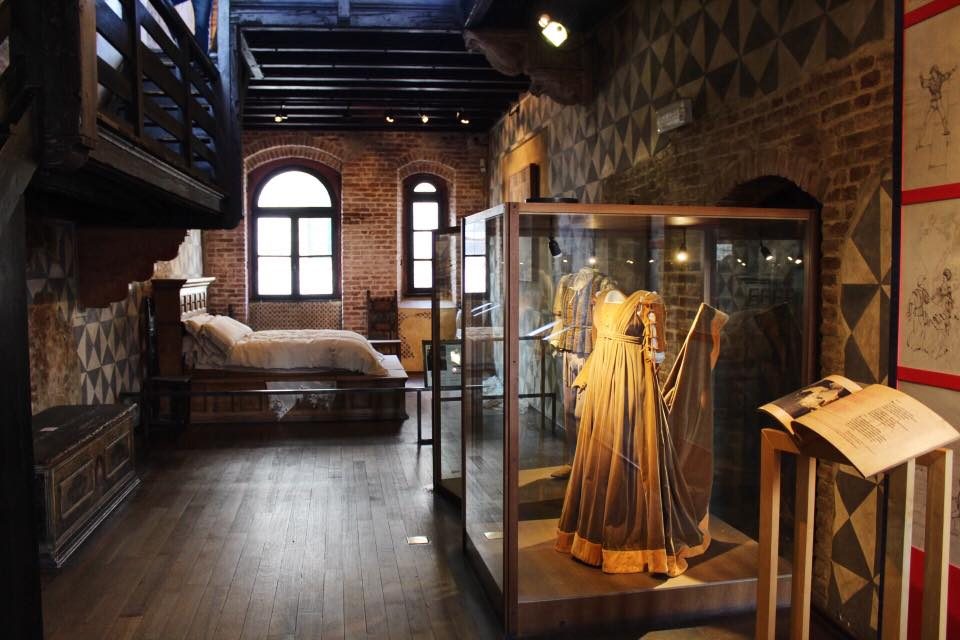
You can also pay 6 euros (P325) to get inside the museum and get a look at how Juliet’s (although fictional) house would look like from the inside.
There are other Romeo-and-Juliet themed museums in Verona but if you’re looking for something else, you can also try the Museo Lapidario Maffeiano which is a 1738 museum featuring a collection of ancient stone carvings and inscriptions.
By 7 pm, travel back to Milan.
Day 5 – Shopping in Milan
Now, you can’t go to Italy’s fashion capital without shopping!
If you plan to shop, the best time to be in Milan is in January for the winter sale or July for the summer sale. And when Italian shops go sale, they mean big, big discounts.
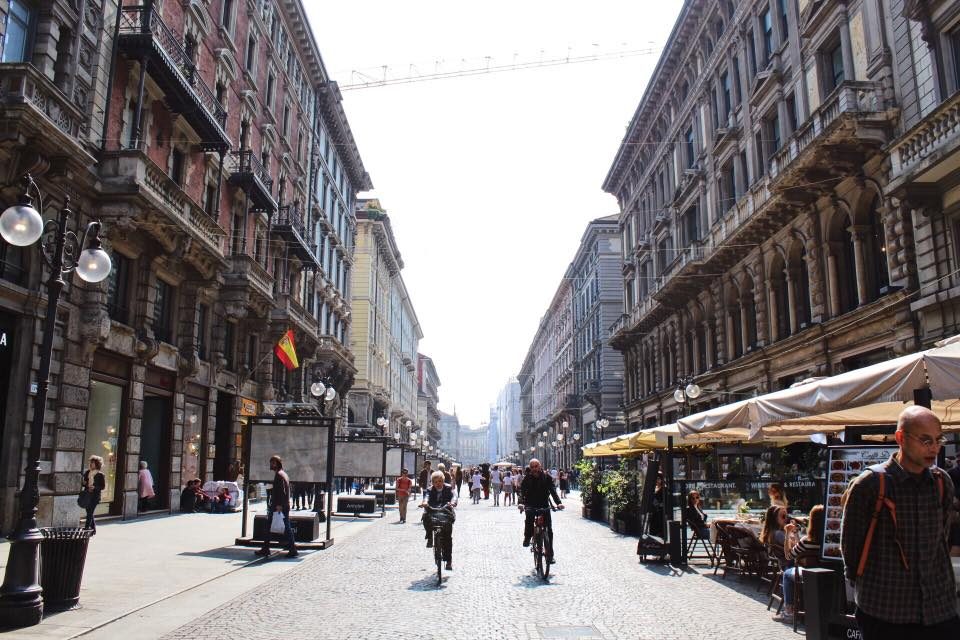
The best place to shop in Milan would be the area surrounding the Duomo. From top fashion brands to local products, you can find everything there.
One of the world’s oldest shopping malls, the Galleria Vittorio Emanuele II, is great for luxury shopping, featuring the biggest designer brands like Gucci and Valentino. While there, try to find the bull from the Turin coat of arms. Tradition says that spinning around 3 times with a heel on the testicles of the bull from the Turin coat of arms will bring good luck!
Other less expensive brands are there too, as well as local goods, so make sure to allot at least a day for shopping in this area.
For souvenirs, you can buy fancy chocolates like Lindt from the Galleria as well. Whole bars, assorted chocolates – you name it, they’ve got it.
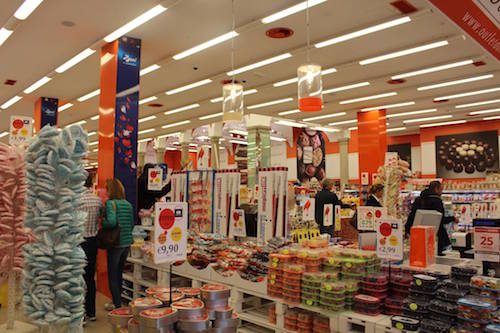
But if you’re looking for cheaper sweets, try the ODS Store which is also just nearby.
WHAT TO BUY IN MILAN: Leather goods (bags, shoes, belts), designer clothes, chocolates, Italian coffee, wine
Day 6 – Venice
Your last Italian city is one of the country’s most famous: Venice.
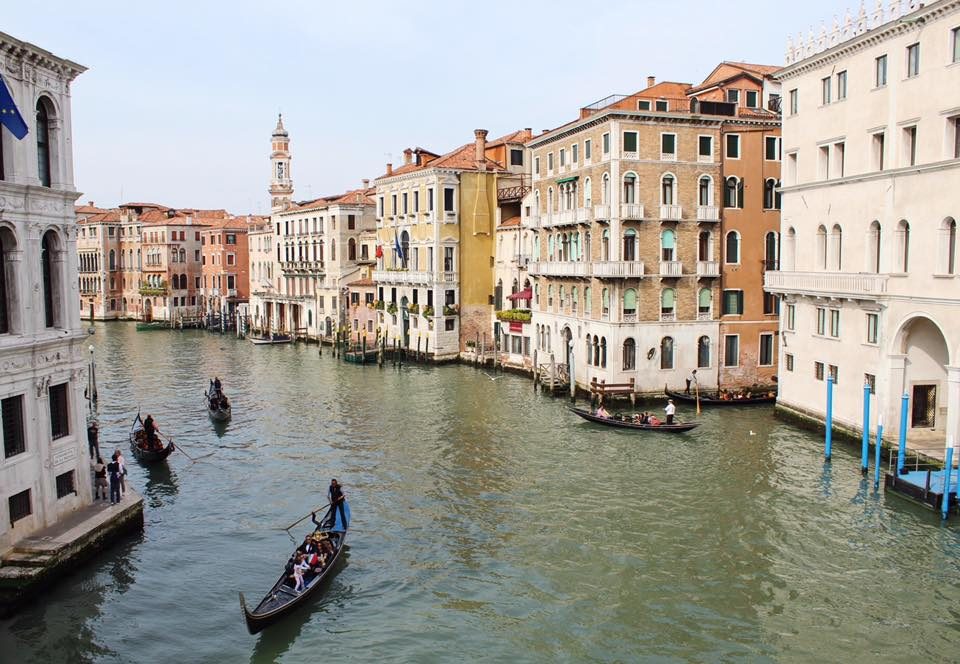
You may opt to stay longer here but I personally didn’t want to because I found it overcrowded and more expensive than other cities. You can take a 3-hour train ride from Milan to Venice for around 20 euros (P1086).
Venice, a city built on more than 100 small islands in a lagoon in the Adriatic Sea, is very a popular tourist destination and is often packed on peak seasons.
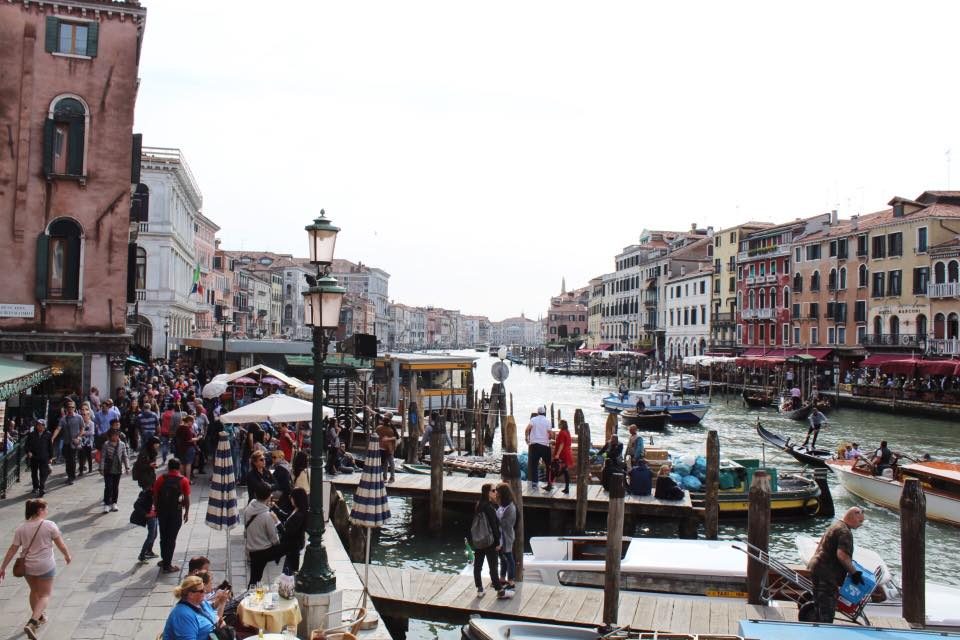
If you want to try out a gondola ride which it’s famous for, you’re going to have to spend 80 euros (P4,345).
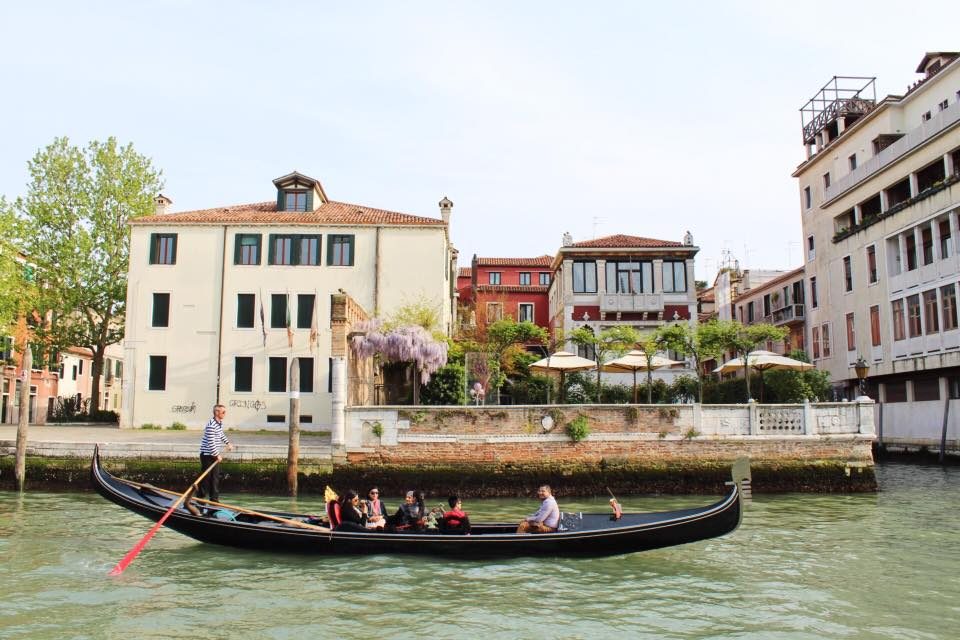
A cheaper alternative would be riding a water bus for 7.50 euros (P407) for a single journey. But I say ditch the water bus (which is almost always full anyway) and just walk if you don’t mind walking.
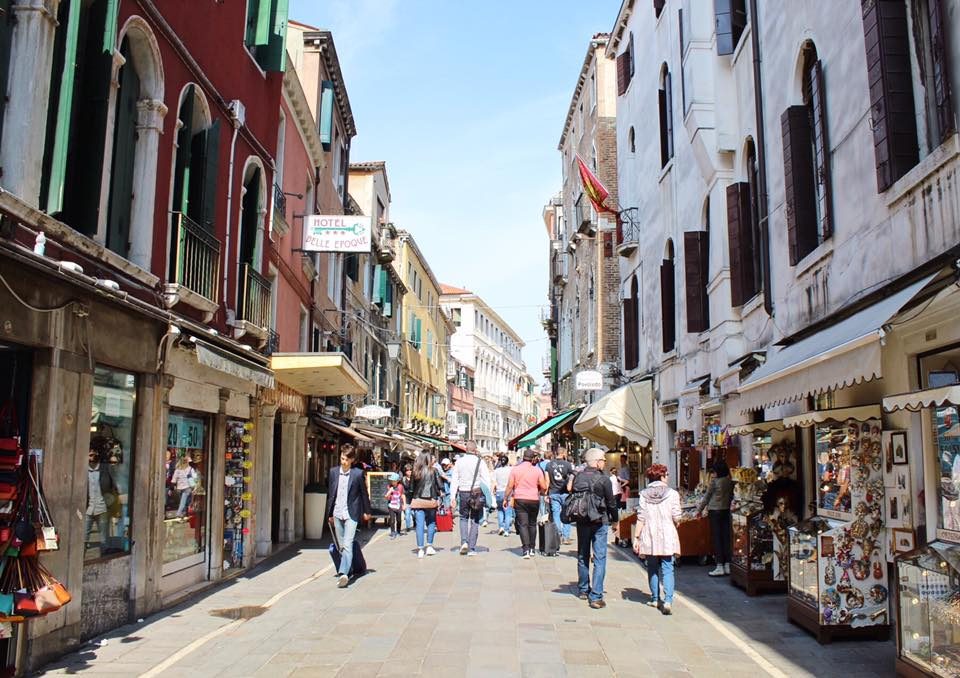
The streets of Venice, as expected, are picture-perfect – a good mix of classic and new. You will notice that souvenirs and food are more expensive there, but if you’re really looking for a fancy souvenir item, you’ll be able to find Murano glass jewelries everywhere there. Murano glass is made on the Venetian island of Murano, whose glassmakers are considered as some of the best in the world.
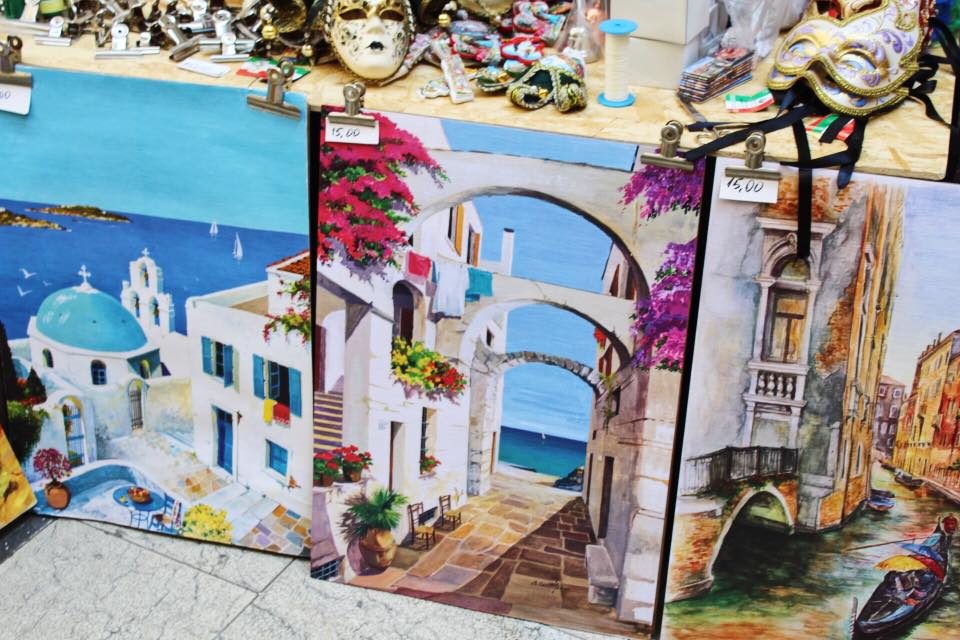
Another good buy when you’re in Italy are artworks. You can find paintings being sold everywhere on the streets of Italy for as low as 15 euros (P814).
Day 7 – Milan (rest and last minute shopping)
For most of my trips, I always try to end it with a day for rest and last-minute chores. Ending it slow and easy like this helps make sure that everything’s ready for your flight home (I hate panic packing).
It will also give you some time to rest after all the walking, so you look totally refreshed when you get back.
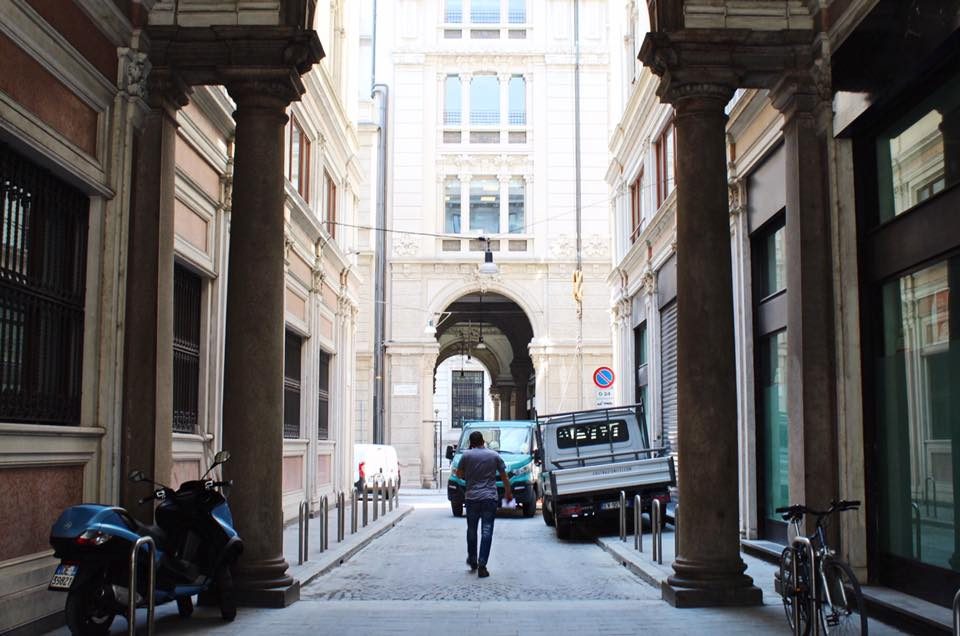
After packing, you can take another stroll around the Duomo or nearby grocery stores for some last minute shopping, too. For my last day, I sat down an Italian restaurant and concluded my tour with a good slice of pizza and a glass of wine.
Sample budget breakdown
Here’s a sample breakdown expenses for your itinerary:
- Visa processing and travel insurance: P6,000
- Accommodation: P4,346 (if you travel in a group of 4)
- Food budget: P6,517
- Souvenirs: P5,000
- Museum tickets: P1,200 (The Last Supper, Juliet’s House, Museo Lapidario Maffeiano)
- Transportation: P700 (10-card for rides within Milan), P1,200 (train ride to and from Malpensa airport), P30,000 (for plane tickets), P4,200 for train tickets to other cities
Overall, the total cost of an all-in trip would be around P59,163 each. With this, you would have already been able to visit at 4 Italian cities, tried Italian food in different restaurants, visited at least 3 museums, and bought souvenirs. – Rappler.com
*1 euro = P54
Italy on a budget? Go for it! Check out our coupons for deals on travel and hotels.
Add a comment
How does this make you feel?

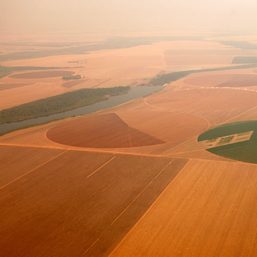
![[WATCH] Try This: Empanada Salteña from Argentina](https://www.rappler.com/tachyon/2023/04/try-this-empanada-saltena-argentina.jpg?resize=257%2C257&crop=765px%2C0px%2C1037px%2C1037px)
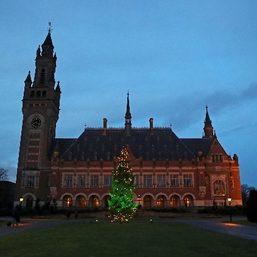
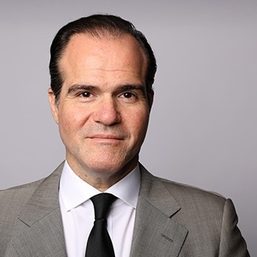
There are no comments yet. Add your comment to start the conversation.